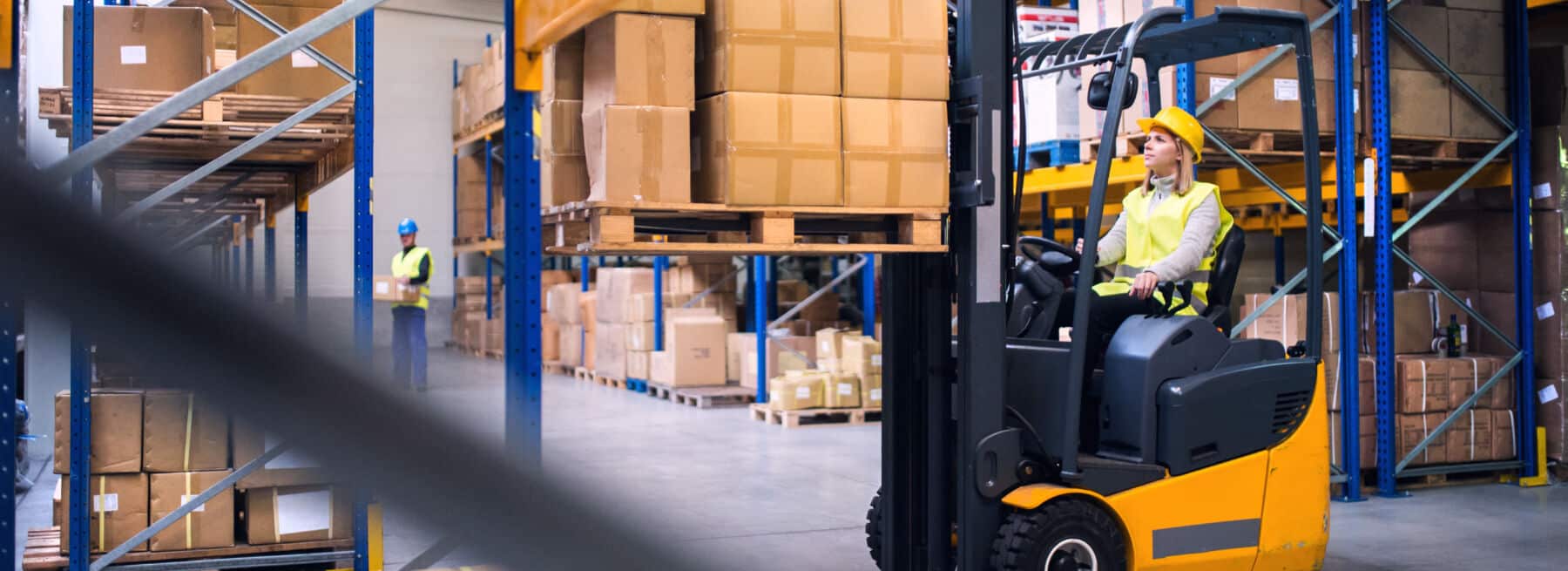The labor shortage remains a top challenge for warehouse operators. A FreightWaves article refers to a survey from Instawork that confirms this. The 2022 survey reveals that 73% of businesses indicate they’re struggling to attract employees. Despite the shortage, demand continues to grow. Almost 60% of the businesses say the volume of fulfillment increased.
The problem is so dire that more than half of light industrial businesses are resorting to using more temporary workers now than they did before COVID. In fact, 85% of them requested help from staffing companies. This didn’t work out as only 6% were able to get the additional needed workers.
Fewer people are taking warehouse jobs. Further compounding the situation is the more experienced workers are retiring. The warehouse industry is losing its most skilled workers. It’s critical to get new workers on board before the skilled ones leave. This allows them to do knowledge transfer. This means there are fewer experienced supervisors around to teach safety practices and observe behavior to make any needed corrections.
It’s clear that warehouse workers are having to do a lot more with a lot less. This trend can increase the risks of fatigue and burning out. Worker fatigue is real. Besides fatigue, the situation also brings with it a higher chance of illnesses and injuries.
The U.S. Occupational Safety and Health Administration indicates that there’s a 37% increased risk of injury when working 12 hours per day. Lost productive work time related to health and fatigue costs employers an estimated $136.4 billion every year. Despite all these challenges, nothing can ever justify sacrificing safety. It continues to be a top priority for every warehouse operation.
Of course, people’s safety comes first. But how can any warehouse operator ensure they create a safe working environment when they’re so short-handed? They are already dealing with more work and fewer resources. The key is to invest in connected and automated safety solutions. These can help boost the safety of the facility.
What Are Connected Safety Solutions?
Connected safety solutions represent a sophisticated and integral approach to helping ensure the well-being of workers in warehouse settings and other environments. In the ever-evolving landscape of safety technologies, these solutions stand out as comprehensive systems that take advantage of connectivity to enhance real-time monitoring, communication, and emergency response capabilities.
At the core of connected safety solutions is the seamless integration of devices, sensors, and communication networks. This interconnected infrastructure allows for the continuous gathering and analysis of data from diverse sources, leading to a holistic understanding of the safety landscape.
Whether implemented in warehouse operations, smart cities, or critical infrastructure facilities, these solutions provide a robust framework for helping to mitigate risks and respond promptly to potential hazards.
Real-time monitoring is a key feature of connected safety solutions. By deploying sensors and smart devices throughout a given environment, these systems help enable continuous surveillance for various parameters such as air quality, temperature, and hazardous material levels. The ability for real-time monitoring not only can facilitate early detection of potential risks but can also allow for swift and targeted responses to help mitigate those risks before they escalate.
Communication is another critical aspect of connected safety solutions. These systems can provide seamless and instantaneous communication among individuals, devices, and centralized control centers. In emergencies, quick and effective communication is paramount. Connected safety solutions can enable timely dissemination of critical information, helping to coordinate response efforts and make sure stakeholders are informed promptly.
Emergency response capabilities can be enhanced through the integration of connected safety solutions. In the event of an incident, these systems can automatically trigger alerts and notifications. When this happens, it streamlines the initiation of emergency protocols. Furthermore, the connectivity allows for the precise location tracking of individuals within a facility or across a broader area, expediting the deployment of response teams to the exact location of an incident.
Scalability is a notable advantage of connected safety solutions. Whether implemented in a small-scale facility or a sprawling urban environment, these systems can be tailored to suit the specific needs and complexities of diverse settings. This adaptability helps ensure that safety measures remain effective and relevant as the scope and nature of potential risks evolve.
Level up Connected Safety with an Integrated Solution
In the contemporary landscape of security and safety, organizations are increasingly turning to an integrated security approach that combines access control systems, video surveillance, Internet of Things (IoT) devices, IP video cameras, scalable and high-availability platforms, and real-time remote monitoring to create safer environments. This multifaceted strategy leverages the strengths of each technology to establish a comprehensive security framework that is adaptive, responsive, and capable of addressing diverse safety challenges.
Together, they help speed up incident response. The connected safety solution does more than help prevent injuries by identifying safety hazards quickly. The integrated security helps deter crime and check for compliance. The combined systems can augment real-time monitoring, communication, and emergency response capabilities.
The monitoring comes from video cameras along with trained security personnel, technology like video analytics and artificial intelligence, or both. The most powerful and effective monitoring uses both human intelligence and technology. They each have their strengths and complement each other well.
Access control systems play a pivotal role in regulating entry to physical spaces, making sure that only authorized employees can access specific areas. These systems utilize advanced authentication methods to grant or deny access.
By implementing access control, organizations cannot only help prevent unauthorized entry but also maintain a record of who enters and exits, providing valuable data for security analysis. Integration with video surveillance can help enhance the effectiveness of access control by correlating access events with corresponding video footage to facilitate any necessary investigations.
Video surveillance, a longstanding cornerstone of security measures, has evolved significantly with advancements in technology. Modern video surveillance systems encompass high-resolution cameras, intelligent analytics, and remote monitoring capabilities. These systems serve as a proactive deterrent to potential threats while providing a detailed visual record of activities.
The integration of video surveillance with access control systems allows for real-time monitoring of entry points, enabling security personnel to help identify and respond swiftly to any anomalies or security breaches.
The Internet of Things (IoT) contributes to safety by interconnecting devices and sensors, creating a network of intelligent, data-generating nodes. In the context of security, IoT devices can include motion sensors, environmental sensors, and even wearable devices for personnel.
For instance, environmental sensors can help detect changes in air quality or temperature, while motion sensors can alert security personnel to unexpected movement in restricted areas. By integrating these IoT devices into the security infrastructure, organizations gain a more nuanced understanding of their environments and can respond proactively to emerging safety concerns.
Real-time monitoring acts as the linchpin that ties these technologies together, helping lead to a swift and coordinated response to potential security threats. Trained monitoring operators can actively monitor access control events, video feeds, and data from IoT devices through a centralized monitoring system. This real-time awareness allows for immediate response to security incidents, whether it be a breach of access control, suspicious activity captured on video surveillance, or an environmental irregularity detected by IoT sensors.
The cooperation among access control systems, video surveillance, IoT, and real-time monitoring creates a dynamic and adaptive security ecosystem. The interconnected nature of these technologies enables a holistic approach to safety, addressing not only physical security but also environmental and situational factors. This integrated strategy is particularly relevant in today’s ever-changing security landscape, where threats can manifest in various forms and necessitate a multifaceted response.
The convergence of security through access control systems, video surveillance, IoT, and real-time monitoring is a powerful means of creating a safer environment. By seamlessly integrating these technologies, organizations can help fortify their security infrastructure, detect and deter threats, and respond promptly to incidents.
The Value of Connected Safety Solutions
The foundation of a safe warehouse begins with a comprehensive understanding of potential hazards. Identifying risks associated with equipment, processes, and the storage of materials is fundamental to developing effective safety protocols. From the operation of heavy machinery to the handling of hazardous materials, a thorough hazard assessment sets the stage for implementing targeted connected safety measures.
Technology can’t work alone. The implementation of safety protocols is crucial to fostering a secure warehouse environment. This involves creating and enforcing guidelines for proper equipment usage, establishing emergency procedures, and providing regular safety training to employees. The dissemination of safety information and the cultivation of a safety-conscious culture among warehouse staff go a long way toward accident prevention and risk mitigation.
Warehouse safety is not static. Rather, it’s an ongoing process that requires continuous improvement. Regular safety audits, feedback mechanisms, and the incorporation of current technology contribute to the evolution of safety protocols. This dynamic approach ensures that the warehouse environment remains adaptive to changing circumstances, emerging risks, and evolving industry standards.
A pivotal aspect of this continuous improvement is leveraging remote video surveillance to its full potential. Beyond its role in security, this technology becomes a proactive tool for identifying areas of improvement in safety practices. The ability to remotely monitor various aspects of warehouse operations provides valuable data for refining safety protocols and addressing potential risks before they escalate.
The integrated connected safety solution sounds like it has a hefty price tag. The reality is that it’s affordable with a big impact and offers complete coverage. Thanks to technological advancements, every business can benefit from the safety and security of video cameras with remote monitoring. With the right vendor, remote video surveillance services often get an ROI within months.
Warehouse safety is a multifaceted commitment that extends beyond mere compliance with regulations. It encompasses a thorough understanding of hazards, the implementation of robust safety protocols, the cultivation of a safety-conscious culture, and the strategic use of connected technology.
Embracing safety as an ongoing process helps ensure that the warehouse remains a secure environment, protecting both personnel and the business’s operational efficiency. For a tailored warehouse safety solution that maximizes return on investment, contact us.
Texas Private Security License Number: B14187
California Alarm Operator License Number: ACO7876
Florida Alarm System Contractor I License Number: EF20001598
Tennessee Alarm Contracting Company License Number: 2294
Virginia Private Security Services Business License Number: 11-19499
Alabama Electronic Security License # 002116
Canada TSBC License: LEL0200704

